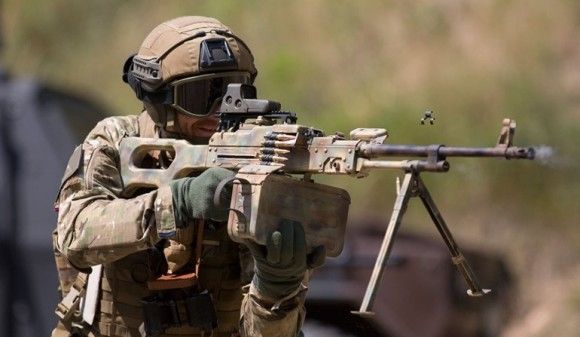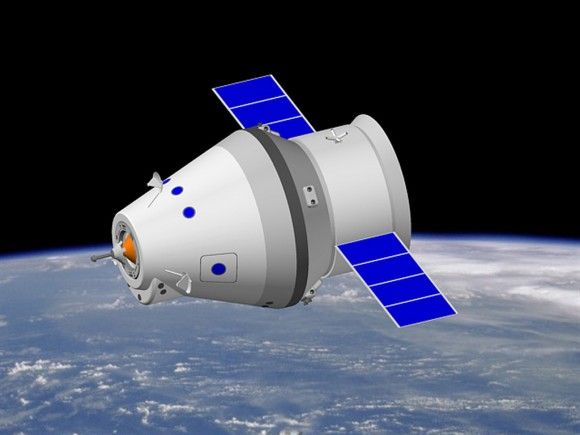Industry
Rak Era in the Polish Army
Information, announcing that a contract, already negotiated, as it was confirmed by Antoni Macierewicz, pertaining to procurement of equipment for four squadron-sized “Regina” artillery units, is going to be signed in a couple of days is not the only, artillery-related event that took part recently in the Polish Army. On Thursday, 17th November, final assembly of the first example of the series manufactured M120K “Rak” self-propelled automatic mortar has come to an end. This is the wheeled version of the platform for the autonomous 120 mm turret system, integrated on the Rosomak APC.
The contract, referring to procurement of the equipment for 8 company-sized units using the Rak mortar, was signed at the HSW facility on 28th April 2016, in presence of the Polish Prime Minister, Beata Szydło. HSW S.A. and Rosomak S.A. companies form a consortium which is the Party who acts as the contractor, within the scope of the said contract. The contract in question covers procurement of 64 mortars and 32 artillery command vehicles, and it is expected to be finalized and implemented within the period between 2017 and 2019. Both of the aforesaid vehicular platforms are based on the same carrier, which leads to simplification of any maintenance or logistical issues that could potentially emerge within the units operating the new equipment. These units, at the same time, are also utilizing wheeled Rosomak APCs, which constitute the base for the new mortar system.
HSW S.A., since a long time now, has been saying that the facility is able to deliver the first “Rak” systems before the deadline, set for the first artillery unit in mid-2017. The company will be able to complete the task, as it has been stressed by its management, even though much of its assets is involved in the launching works related to the expanded barrel-manufacturing department, series manufacturing of the “Krab” howitzers for the first of the “Regina” squadrons (and advancement of the works regarding the second “squadron fire module”, not yet contracted by the Polish Ministry of Defence), and works related to test programmes concerning the self-propelled “Kryl” howitzer, ZSSW-30 remote controlled turret module development, and the “Borsuk” IFV.
Assembly process related to the series-produced Rak mortars began in November. The turret systems for the mortars, the delivery of which is expected to happen in 2017, are at varied stages of assembly, and are undergoing installation of the electronic systems. Once the turrets are integrated with the platforms, the only steps left to be completed include the handing-off tests and final paint works. All of the base platforms for the first module, manufactured by Rosomak S.A. company, are already present in Stalowa Wola, here we are referring both to the chassis for the mortars, as well as to the base platforms which are to be used to create the command vehicles.
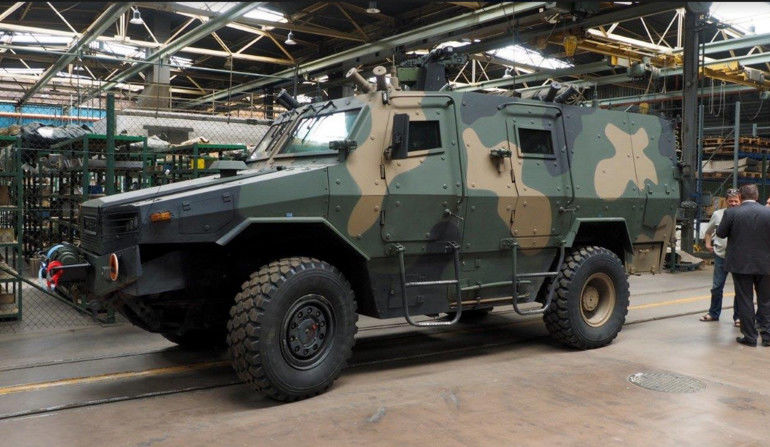
Before the mortars, that are being successively assembled, are delivered to the operational units, procedures related to contracts regarding the remaining elements of the company fire modules shall also be concluded. Here we are referring not only to the artillery reconnaissance AWR platform, based on the AMZ “Żubr” chassis and the Artillery Armament Repair Vehicle (AWRU) based on a three-axled Jelcz P.622 chassis (both vehicles, which was confirmed by the Armament Inspectorate, have already went through the state qualification tests programme), but also to the Artillery Ammunition Vehicle (AWA), based on a 4-axle chassis hailing from the Jelcz P.882 family. AWA test programme is expected to be finalized by 31st March 2017. As it was assumed before the April contract conclusion, delivery of these components of the module, during the production process, is expected to “catch up” with the mortars and command platforms, both of which are said to be more time- and work-consuming to manufacture. The lengthy production process concerning the aforesaid vehicles is related, inter alia, to the procedure of procuring the electronic equipment from a foreign partner, including the TALIN 5000 INS-Satellite Navigation Suite, which may last up to 9 months from the moment when the order is placed.
The Armament Inspectorate and HSW S.A. confirm the information obtained by Defence24.pl, suggesting that the qualification test programme regarding the M120G variant of the mortar based on the LPG tracked-chassis has also come to an end. In theory, this paves the road towards mass orders regarding this variety of the Rak vehicle too. The fact that the Army is interested in procurement of such system has been confirmed by the Polish Minister of Defence, Antoni Macierewicz, during his visit at the facility which took place in November. However, nothing suggests that the Polish Ministry of Defence is in a rush, making such decision. Firstly, procurement of the M120G vehicles is not covered by the Technical Modernization Plan, which was reviewed, updated and approved on 7th October.
Secondly, it is highly probable that the issue of orders, regarding the Rak vehicles based on a tracked chassis, would emerge again, when the agreement concerning the acquisition of the wheeled variant is fully implemented, and when readiness is gained by a new amphibious Borsuk IFV, designed and developed within the framework of a separate programme carried out by a consortium which is also being led by the HSW S.A. company. In case of the new IFV, a much more modern tracked (UMPG) chassis is being designed, equipped with hydro-pneumatic suspension and much more powerful powerpack, guaranteeing better performance too. The new chassis is also designed with higher levels of ballistic and IED protection in mind. During the phase when the new UMPG platform has been designed, it has been taken into account that the carrier in question would act as a base for a variety of specialized variants, including the one utilizing the “Rak” mortar turret system. Obviously, in case of this version, the amphibious capability requirements will not remain in force. However, the Polish Ministry of Defence still wants the new IFV to retain the amphibious capabilities.
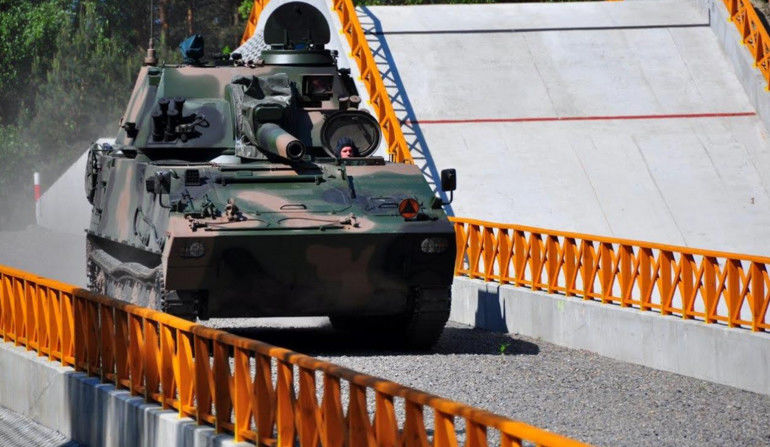
The fact that the mortar, using the older LPG platform, has already passed the qualification stage, is going to simplify the test procedure for the final M120G vehicle, using the new chassis. Most probably, unless procedures remaining in force within that scope are changed, and the army is still interested in procurement of such fire support platform, placing the mortar on a new carrier would be implemented as a “type” certification, not as a long-term qualification tests programme, already passed by the M120G variant. Such procedure has also been utilized within the process of implementing the new chassis for the 155 mm Krab SPH.
The new platform, as we have reported it previously, has been provided for the said SPH in mid-August 2015, the test programme began in October, and in April, the manufacturer delivered the first two examples of the “Krab” howitzer to the Army, with the SPHs being based on the South Korean K9 “Thunder” howitzer platform. Handing off procedures related to another 9 “Krab” howitzers have been personally confirmed in November by the Polish Minister of Defence, while the following examples are going to be transferred to the army within weeks. All of the above developments seem to suggest that delivery of the equipment for the first of the “Regina” units would be completed before the July 2017 deadline (the Ministry mentions the date of 30th August 2017 too). Should a similar scenario be adopted for the tracked variant of the Rak mortar, it would be possible to begin the deliveries of the M120G variant following the initiation of production of the UMPG platform. This vehicle is to be ready for series manufacturing in 2020, as the development works are expected to be finalized before 23rd October 2019.
17th “Wielkopolska” Mechanized Brigade from Międzyrzecz, 12th Mechanized Brigade from Szczecin and 21st Highland Brigade from Rzeszów are among the first units in queue to receive the new artillery systems, allowing the army to provide close support for the combat units in a manner which would be far more effective. These said units are already utilizing the “Rosomak” APCs, or are expected to receive such vehicles in the near future.
“Rak” is a completely Polish design. It is capable of attacking targets at distances of up to 12 kilometres, with a rate of fire of 10 rounds per minute. The system may also be used to fire rounds in an MRSI (Multiple Rounds Simultaneous Impact) mode, in which rounds shot at different trajectories have the same time on target. Moreover, the mortar is also capable, which has been impossible in case of the mortars that fire their rounds at high angles (45-80 degrees), of hitting its targets directly, even with elevation of -3o. Firing the rounds accurately in straight line is facilitated by, among other systems, optronic sight fitted with a FLIR camera and a laser rangefinder. This feature of the “Rak” mortar is treated as an element of the vehicle’s self-defence system, increasing the level of battlefield survival rate.
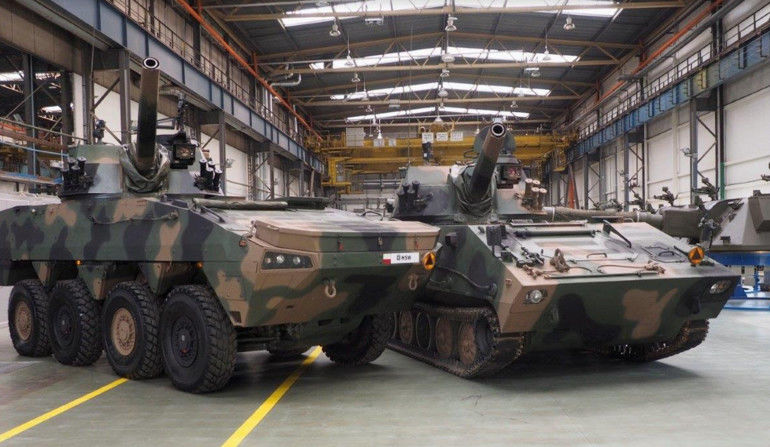
The self-defence capabilities are also enhanced thanks to the OBRA-3 SSP1 laser-warning receiver. Moreover, the vehicle is also capable of leaving its firing position within 15 seconds from the last shot being taken. 81 mm grenade launchers, UKM 2000D machine gun with the “Bazalt” sight and 360 degrees observation system further improve the self-defence ability of the platform. Contrary to the information available, nobody confirms the fact that, reportedly, works have begun to develop anti-tank ammunition (HEAT or sabot rounds) that could be tailored for being fired from the “Rak” turret module. Within the units, in which the M120K mortars are expected to be utilized (support companies for the frontline battalions) an armoured element and a sniper unit are also to be included.
As it has been stated by the manufacturer, the system makes it possible to fire rounds autonomously, once its position is set, and it is also possible for the platform to operate in a net-centric setting, with data transmission and information exchange carried out in real time. “Rak” ICT system, and reconfiguration capabilities related to its software, allow the platoon command vehicles to assume command over the mortar battery and other way round. The integrated C4I suite (Command, Control, Communication, Computing And Intelligence) is based on the “Topaz” solution, utilizing new IT and software systems. The said command suite includes “Fonet” communications management system, RF-5800H and RRC-9113AP radios, TALIN 5000 INS integrated with the GPS receiver and odometer.
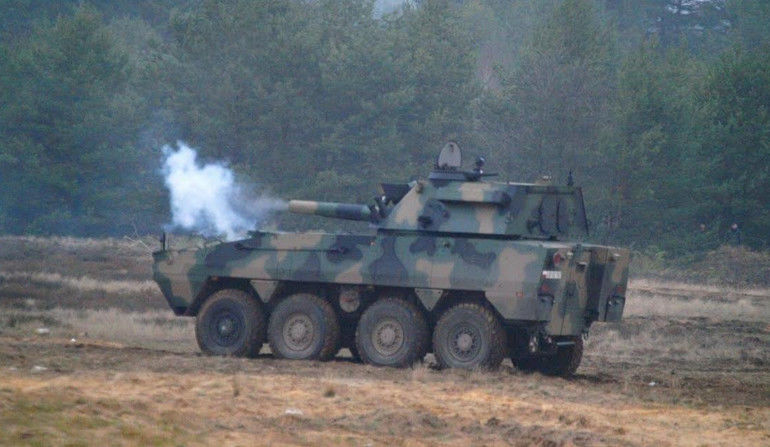
“Rak” mortar also features a system which automatically aims the mortar and utilizes the targeting data received from the AWR reconnaissance vehicle, with embedded portable observation-reconnaissance kit featuring a battlefield radar and an optronic suite (thermal vision, CCD. LLTV and IR cameras) and a laser rangefinder placed on a deployable 4 meters high mast, coupled with the command system terminal, navigation suite and remote control “Kobuz” armament module. Defence24.pl had a chance to observe the field tests of the “Rak” mortar, effectively firing the rounds without the crew inside. The utilized ICT solutions, including the command ad communication suites, fully integrated with the “Topaz” and “Fonet” suites, allow the user to carry out wired and wireless data and audio exchange, with the tactical level artillery command.
The solutions adopted by HSW, assuming that “Rak” is based on an autonomous turret system, make it possible to place the mortar on any carrier of proper size and capacity. This has been done, successfully, in case of the Marder IFV platform. As we were assured by HSW, no problems are expected to emerge also in case of integrating the turret with the “Piranha” APC (should the Czech Army still be interested in such solution), or the BTR-4 vehicle. The ammunition storage will, on the other hand, be dependent on the vehicle on which the mortar is based, as it is placed outside the carousel automated loading unit, holding 20 rounds ready for direct use. In case of the variants that are being currently offered by the HSW facility, the vehicle carries 26 rounds within its body.
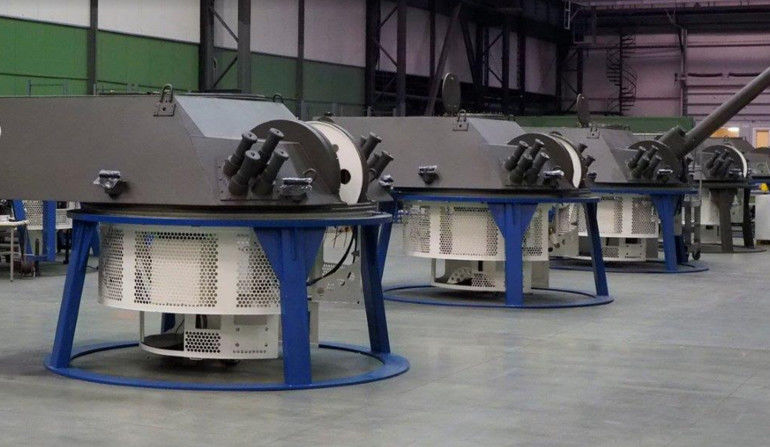
Performance and solutions embedded within the M120K/G platform, and the innovation contained, is one thing, real effectiveness on the battlefield is another issue. The ammunition branch of the Polish defence industry has just begun its struggle to catch up with the development process concerning the “Rak” vehicle. As a result of ineffective management and lack of determination on the part of the Polish Ministry of Defence, a significant delay emerged, as many years could be used to develop relevant ammunition for the new platform. ZM DEZAMET Nowa Dęba still carries out the test programme regarding the final solutions that could be applied in case of the high-explosive rounds for the mortar, which, following the illumination and smoke rounds, are the third type of ammunition dedicated for the “Rak” platform. MESKO, and Centrum Rozwojowo-Wdrożeniowe Telesystem MESKO [Telesystem MESKO Development-Implementation Centre] are focused on developing precision laser-guided rounds with 8 kilometres of range, that could be used by the “Rak” mortar too, nonetheless it is difficult to estimate when this type of ammunition would enter mass production.
Until the moment when it is introduced, “Rak” crews will use transitional ammunition, based on modified classic OF843B mortar rounds for the towed 120 mm mortars, loaded at the muzzle. The Army is still in possession of high quantity of such rounds. This ammunition is soon going to reach the end of its lifetime, and this would mean that costly disposal would be required for these rounds to be carried out. Using it for the purpose of training the crews of the M120 mortars is, within such context, rational to some degree, however it cannot be seen as a final solution of the problem related to the projectiles for the “Rak” mortar.
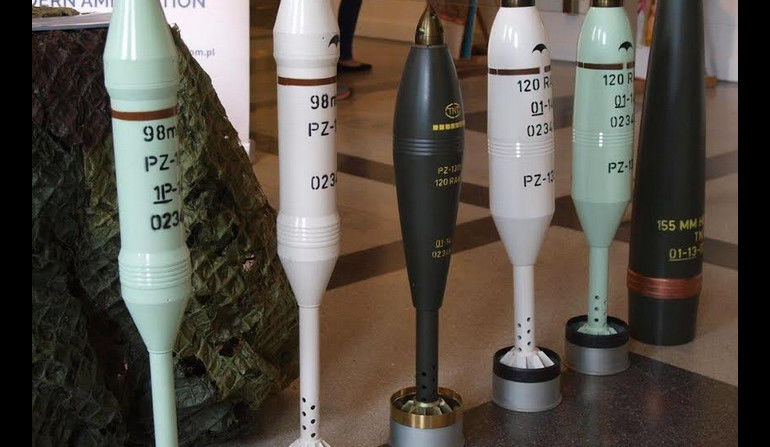
Considering the fact that the rounds in question have not been designed to withstand the pressures that may be recorded within the Rak’s barrel (up to 250 MPa), assuring that the projectile achieves supersonic velocity at the muzzle, it remains impossible to utilize full-size propelling charges. Hence, it is impossible for this ammunition to provide the “Rak” platform with designed range. It is a temporary solution allowing the user to achieve ranges of around 7-8 kilometres, comparable to a classic Type 43 mortar of this calibre, which is still being used by the Polish Army.
The new projectile, with a mass of 18.5 kilograms and muzzle velocity of 500 meters per second, is to provide the weapon with a range of 10 kilometres, as suggested by ZM Dezamet. This value seems to be underestimated though, as such ranges have already been achieved by the mortar at the initial stages of the research. The above means that the new round is going to be significantly more powerful than the ammunition which has been utilized so far. For the sake of comparison: live OF843 round weighs 16.02 kilograms. 120 mm mortar rounds used by Israel, USA, France or Austria (HE78, Mle44, M934 or M98) have their weights ranging from 13.6 to 14.8 kilograms.
The issues related to procurement of modern ammunition for the newly developed artillery systems - “Rak” and “Regina/Krab” - were already raised during the recent meeting of the parliamentary subcommittee, working on the issues pertaining to the Polish defence industry. During his November visit at the Stalowa Wola facility, Antoni Macierewicz, Polish Minister of Defence, assured that “ammunition for the mortar is already available, and that we will receive it soon”.
Jerzy Rzeszczyński

